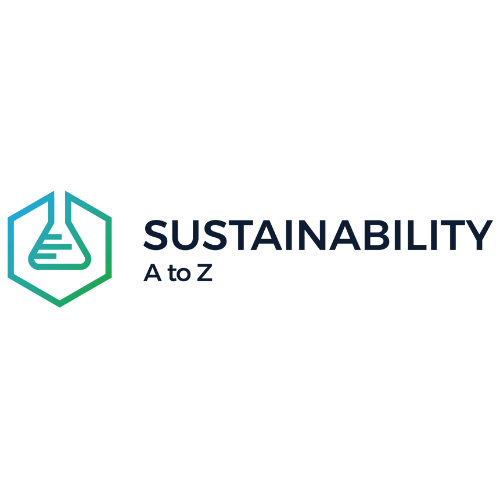
Services
We draw on our decades of engineering, chemistry, and innovation experience.
We have developed ingredient scorecards, assessed human health and environmental toxicities of product formulations, conducted life cycle assessments, and crafted sustainability strategies for small niche brands and some of the world’s largest personal care brands.
Green Chemistry & Green Engineering
The Principles of Green Chemistry and Green Engineering were developed as frameworks to operationalize sustainability. Many companies have already embarked on their sustainability journey through developing new tools for raw material design, chemical screening, and formulations. It is imperative that we innovate – and aim for disruptive innovation where possible – because innovation is value, is new performance, is competitive advantage, and is fun.
Green Chemistry & Green Engineering implementation
There is significant attention to the “what” and “why” of sustainability and much less engagement on the “how”. These Principles provide guidance to ensure consideration of efficiencies, but also to reduce hazard and consider a product or service’s life cycle in a systematic way. This limits the likelihood of advancing any one sustainability goal with trade-offs or unintended consequences.
Guiding Sustainable Innovation
Innovation is a critical element to achieving sustainability goals and staying competitive in the marketplace. We will not move away from the current unsustainable trajectory with the chemicals, materials, processes, policies, and ideas we have today. It is imperative that we innovate – and aim for disruptive innovation where possible – because innovation is value, is new performance, is competitive advantage, is fun. However, this innovation must be aligned with our sustainability objectives. In this way, we ensure that we are designing the tomorrow we want and not creating challenges for future generations with our novel designs.
Independent Assessment of Chemical Design & Formulation Tools
We have provided critical analysis of some of the leading-edge tools that identify strengths and opportunities for improvement. We have helped make these tools more efficient, in part through leveraging publicly available information, and have supported the expansion of several of these tools to incorporate emerging chemicals and concerns. The result of these activities is tools that are more robust, more user-friendly, and more rigorous, ultimately making them more useful.
Computational Toxicology & Chemical Screening
There are significant pressures – from regulations such as California’s Green Chemistry legislation to market pressures driven by increasing consumer awareness – to identify alternatives to chemicals that have been deemed to be of concern. From a business standpoint, it makes sense to start moving away from these chemicals and materials. In today’s marketplace, it is crucial to have the fullest understanding possible of the chemicals and materials that are in your product. This includes those that are present intentionally and those that are not. Further, it is important to partner with your suppliers to collect vital pieces of this information.
Chemical/Raw Material Screening & Multivariate Assessment
We can help you first identify the chemicals and raw materials in your portfolio, and subsequently conduct rigorous multivariate assessments that consider environmental impact, human health, ecotoxicity, and social metrics for a variety of endpoints. We conduct these assessments using a variety of information sources including through models developed by our team and those that are publicly available. In all cases, our clients own the final assessment as well as the raw data used in the assessment.
Alternatives Identification & Assessment
Our analysis begins by asking what service this chemical or material is providing in your product, and what is the best way of providing that service that balances financial, environmental, and human health considerations. In this way, we are not just identifying drop-in replacements but working with our clients to rethink their current products for enhanced performance and value. Once we identify a potential alternative, we evaluate its expected performance while considering its endpoints, its potential trade-offs, and any possible conflicts with your existing infrastructure.
Chemical Modeling For Toxicity Endpoints
We have developed models based on physiochemical properties, reaction mechanisms, thermodynamics, and binding mechanics to predict the likelihood that a chemical will be of concern for a given endpoint. Work thus far has focused on aquatic toxicity and dermal endpoints, but the approach is readily expandable to other toxicity endpoints of interest. These models can be used as predictive screening tools, but are potentially even more powerful to guide the innovation of new chemicals.
Operational Footprint
We have worked with companies to establish baselines, compare current performance to other organizations in the same sector or of similar size, and ultimately facilitate goal setting for numerous activities related to sustainability. Green products and processes should strive for benign and efficient use of resources throughout their life cycles – from extracting the materials that go into them to their use and eventual disposal.
Sustainability Goals & Metrics
While it is well-established that it is difficult to quantify all of the desirable outcomes associated with sustainability, it is important that organizations develop goals to motivate action and metrics to measure progress. It is also critical that accountability and incentives associated with those goals are distributed throughout the organization in order to promote responsibility and organization-wide participation in environmental performance. We have worked with companies to establish baselines, compare current performance to other organizations in the same sector or of similar size, and ultimately facilitate goal setting for numerous activities related to sustainability. From here, we have worked to identify metrics that support progress towards these goals and built tools for reporting from multiple channels.
Life Cycle Assessment (LCA)
Life Cycle Assessment (LCA) is an internationally standardized, mutli-criteria tool for quantitatively evaluating the environmental impacts associated with a product or process. We have conducted LCAs and created custom LCA tools for companies in a wide range of industries, including basic and fine chemicals, pharmaceuticals, cosmetics, minerals and metals, plastics, aerospace, electronics and appliances, buildings and construction, water infrastructure, and waste management.
Carbon & Water Footprinting
Companies often turn to carbon and water footprinting as first steps in tracking resource use and environmental impacts in their own operations, and increasingly, throughout their supply chains. We use the latest standards from WRI/WBCSD, ISO, and PAS2050 to deliver detailed accounts that can be used as a baseline for reporting and to identify opportunities for improving resource efficiency.
Stakeholder Engagement
Sustainability reporting has increasingly become standard practice among companies large and small, as shareholders, consumers, government, and other stakeholders demand ever-greater transparency from from the private sector. Given the global nature of today’s marketplace, it is important to have mechanisms to identify and communicate with first-, second- and sometimes third-tier suppliers.
Consulting On Green Chemistry Regulations & Policies
There is a proliferation of green chemistry regulations and policies at the local, state, national, and international level. We have worked with both policymakers and organizations that must comply with these new regulations to ensure that they are efficient and effective in driving innovation and implementation of safer alternatives.
Sustainability Reporting
Sustainability reporting can take many forms, including internally-driven Corporate Social Responsibility reports, or externally-driven frameworks such as the Global Reporting Initiative (GRI), Carbon Disclosure Project (CDP) or REACH. We will guide you through the process of identifying the most appropriate reporting scheme(s) for your organization and help you develop the systems and processes necessary to collect, manage and communicate your sustainability information.
Supply Chain Engagement & Transparency
While there is much that can be achieved in terms of reducing the environmental impact within your organizations’ four walls, this often pales in comparison to the impact that occurs throughout your organization’s supply chain. Given the global nature of today’s marketplace, it is important to have mechanisms to identify and communicate with first-, second- and sometimes third-tier suppliers. Through metrics and surveys, we have worked to establish partnerships between our clients and their supply chain to support transparent information exchange in a way that is cognizant of proprietary or confidential business information. This information can be used to set goals, quantify metrics, or identify potential liabilities or opportunities related to environmental, social, or economic performance.
Technical Matchmaking
Given our significant network throughout the Green Chemistry and Green Engineering communities in academia, industry, and governmental labs, we have the capacity to identify the right expert or experts to meet your organization’s unique needs. We can facilitate bringing this expert to your organization for a seminar and can support efforts to establish a partnership with the expert from problem identification through a satisfactory solution.













